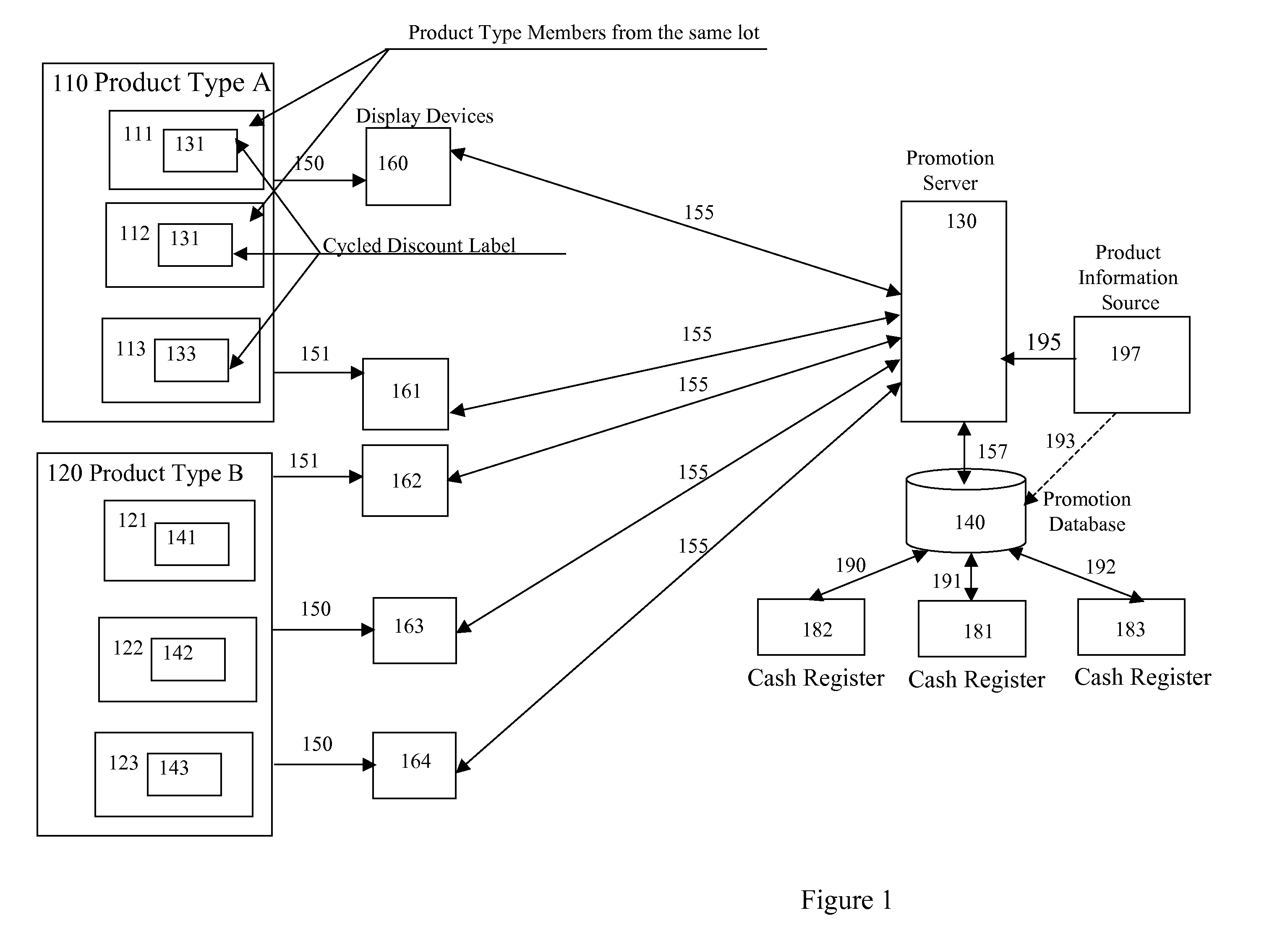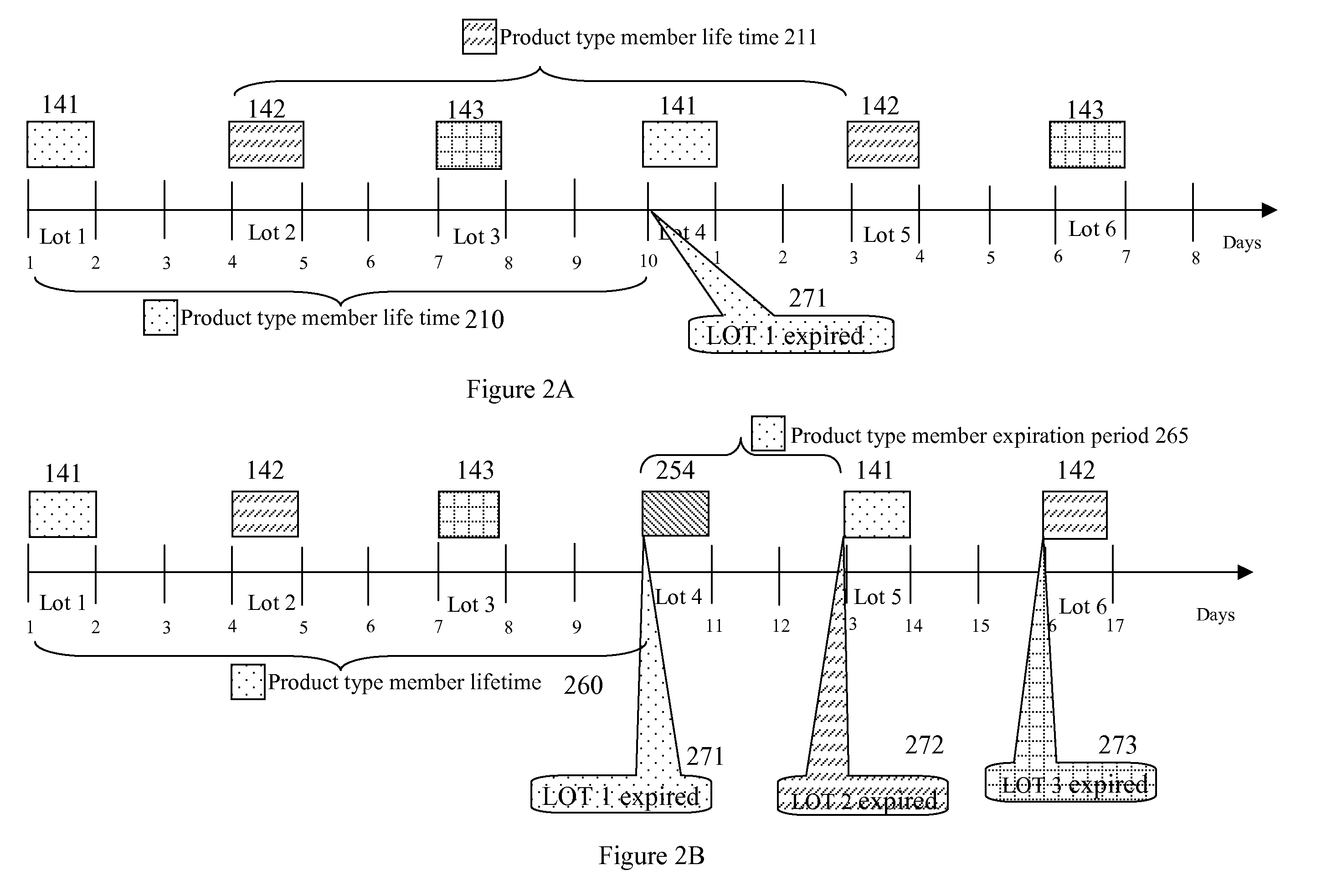Method of product price promotion
a product price and promotion method technology, applied in the direction of identification means, instruments, seals, etc., can solve the problems of inability to easily and effectively identify and manage the re-labeling process, the technique of re-labeling is not suitable, and the manual re-labeling process is very limited, so as to reduce waste, reduce manual labor, and increase profit
- Summary
- Abstract
- Description
- Claims
- Application Information
AI Technical Summary
Benefits of technology
Problems solved by technology
Method used
Image
Examples
Embodiment Construction
[0026]FIG. 1 illustrates products price promotion system elements and associated interfaces. A plurality of different Product Types (PTs) 110, 120 such as cheese packages or sardine cans are illustrated. Each product type is comprised of Product Type Members (PTMs) 111, 112, 113, 121, 122, 123. Each PTM has the same exact PT characteristics (i.e. package, manufacturer, weight, ingredients, process, etc.). However, different PTMs from the same PT could be associated with different production times. A plurality of PTMs from a plurality of PTs is placed on a supermarket's shelves. In FIG. 1, PTMs 111, 112 are a subset of PTMs of the same PT and from the same lot. Therefore, they are labeled with identical Cycled Discount Labels (CDLs) 131. A lot is defined as one or more consecutive production batches of PTMs from the same PT. A batch could be also associated with the same pickup date of natural PTs such as fruits or vegetables. CDLs 131, 133, 141, 142, 143 are visual labels that are p...
PUM
 Login to View More
Login to View More Abstract
Description
Claims
Application Information
 Login to View More
Login to View More - R&D
- Intellectual Property
- Life Sciences
- Materials
- Tech Scout
- Unparalleled Data Quality
- Higher Quality Content
- 60% Fewer Hallucinations
Browse by: Latest US Patents, China's latest patents, Technical Efficacy Thesaurus, Application Domain, Technology Topic, Popular Technical Reports.
© 2025 PatSnap. All rights reserved.Legal|Privacy policy|Modern Slavery Act Transparency Statement|Sitemap|About US| Contact US: help@patsnap.com



